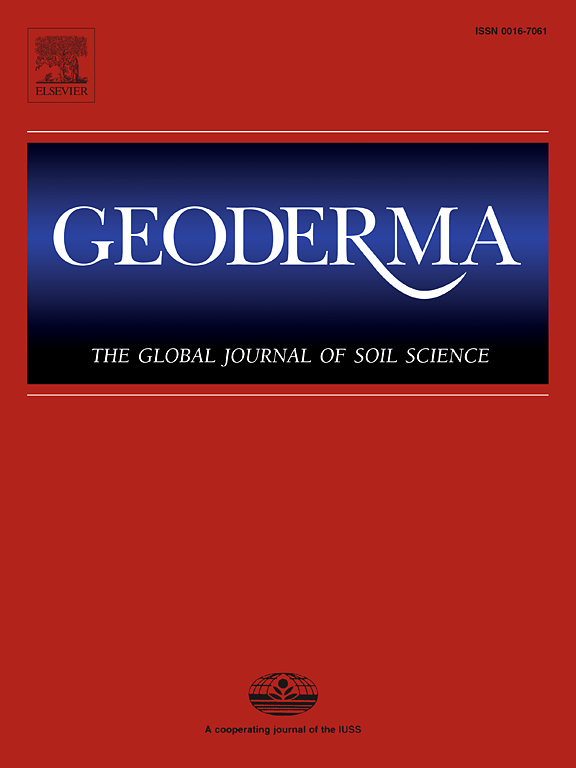Characterization and modeling of exogenous selenite aging in soils using machine learning and traditional data analysis
IF 5.6
1区 农林科学
Q1 SOIL SCIENCE
引用次数: 0
Abstract
Understanding and predicting the aging process of exogenous selenium (Se) in soil is crucial for Se biofortification. However, the long-term aging of selenite in various soils has rarely been reported, and the key factors influencing this aging process remain unclear. Our study involved nineteen typical Chinese soils with varying physiochemical properties, all spiked with potassium selenite (1.0 mg kg−1 Se) and incubated for 180 days. Soil available Se extracted using a 0.1 M K2HPO4-KH2PO4 solution was measured through the whole aging process. The average available Se% (the percentage of available Se in aged soils to total added Se) of all soils decreased from 55.4 % on the day 1 to 32.6 % on day 60, remaining stable thereafter. Pseudo-second-order equation provided the optimal fit (R2 > 0.989, P < 0.01) for characterizing the dynamic process of selenite aging in soil, indicating that chemisorption, rather than internal diffusion, controlled the main rate-limiting step in the selenite aging process. Both machine learning and traditional correlation analysis indicated aging time was the most critical feature and the key soil property that contributed to available Se was pH. Empirical models incorporating soil properties and aging time were developed to predict changes of available Se in soil during aging under aerobic conditions. The reliability of the prediction model was further validated using data collected from previous studies. The developed aging model could potentially be used to scale biofortification data of Se generated from different soils under different aging times.
利用机器学习和传统数据分析对土壤中的外源亚硒酸盐老化进行表征和建模
了解和预测外源硒(Se)在土壤中的老化过程对于硒的生物强化至关重要。然而,有关亚硒酸盐在各种土壤中长期老化的报道却很少,而且影响这一老化过程的关键因素仍不清楚。我们的研究涉及 19 种具有不同理化性质的典型中国土壤,它们都添加了亚硒酸钾(1.0 mg kg-1 Se)并培养了 180 天。在整个老化过程中,对使用 0.1 M K2HPO4-KH2PO4 溶液提取的土壤可利用硒进行了测量。所有土壤的平均可利用 Se% (陈化土壤中的可利用 Se 占总添加 Se 的百分比)从第 1 天的 55.4% 下降到第 60 天的 32.6%,之后保持稳定。伪二阶方程为表征土壤中硒酸盐老化的动态过程提供了最佳拟合(R2 > 0.989,P < 0.01),表明化学吸附而非内部扩散控制了硒酸盐老化过程的主要限速步骤。机器学习和传统相关分析都表明,老化时间是最关键的特征,而影响可用硒的关键土壤特性是 pH 值。结合土壤特性和老化时间建立的经验模型可以预测土壤中可用硒在有氧条件下老化过程中的变化。利用以前研究收集的数据进一步验证了预测模型的可靠性。所开发的老化模型有可能用于对不同土壤在不同老化时间下产生的硒的生物强化数据进行缩放。
本文章由计算机程序翻译,如有差异,请以英文原文为准。
求助全文
约1分钟内获得全文
求助全文
来源期刊

Geoderma
农林科学-土壤科学
CiteScore
11.80
自引率
6.60%
发文量
597
审稿时长
58 days
期刊介绍:
Geoderma - the global journal of soil science - welcomes authors, readers and soil research from all parts of the world, encourages worldwide soil studies, and embraces all aspects of soil science and its associated pedagogy. The journal particularly welcomes interdisciplinary work focusing on dynamic soil processes and functions across space and time.
 求助内容:
求助内容: 应助结果提醒方式:
应助结果提醒方式:


